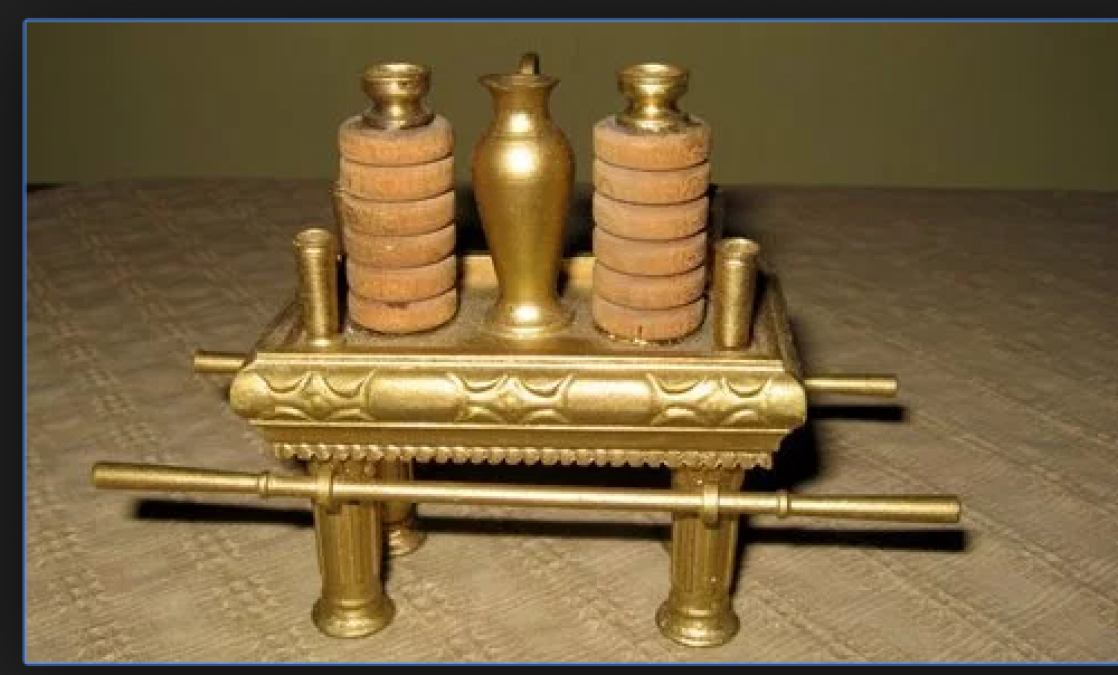
The table of showbread, also known as the "table of shewbread" (KJV), was an important piece of furniture inside the Holy Place of the tabernacle. It was situated on the north side of the Holy Place, a private chamber where only priests were allowed to enter and perform daily rituals of worship as representatives for the people.
Description of the Table of Showbread Made of acacia wood overlaid with pure gold, the table of showbread measured three feet long by one and a half feet wide and two and a quarter feet high. A decorative framework of gold crowned the rim, and each corner of the table was equipped with gold rings to hold the carrying poles. These, too, were overlaid with gold.
Here are the plans God gave to Moses for the table of showbread: "Make a table of acacia wood — two cubits long, a cubit wide and a cubit and a half high. Overlay it with pure gold and make a gold molding around it. Also make around it a rim a handbreadth wide and put a gold molding on the rim. Make four gold rings for the table and fasten them to the four corners, where the four legs are. The rings are to be close to the rim to hold the poles used in carrying the table. Make the poles of acacia wood, overlay them with gold and carry the table with them. And make its plates and dishes of pure gold, as well as its pitchers and bowls for the pouring out of offerings. Put the bread of the Presence on this table to be before me at all times." (NIV)
Atop the table of showbread on pure gold plates, Aaron and his sons placed 12 loaves of bread made from fine flour. Also called "bread of the presence," the loaves were arranged in two rows or piles of six, with frankincense sprinkled on each row. The loaves of bread were considered holy, an offering before the presence of God, and could be eaten only by the priests. Each week on the Sabbath, the priests consumed the old bread and replaced it with fresh loaves and frankincense supplied by the people.
Significance of the Table of Showbread The table of showbread was a constant reminder of God's everlasting covenant with his people and his provision for the 12 tribes of Israel, represented by the 12 loaves. In John 6:35, Jesus said, "I am the bread of life. Whoever comes to me will never go hungry, and whoever believes in me will never be thirsty." (NLT) Later, in verse 51, he said, "I am the living bread that came down from heaven. Whoever eats this bread will live forever. This bread is my flesh, which I will give for the life of the world."
also read The lord Brahma: Fundamental forces symbolized of universe creator
Today, Christians observe communion, partaking of consecrated bread to remember the sacrifice of Jesus Christ on the cross. The table of showbread in Israel's worship pointed forward to the future Messiah and his fulfillment of the covenant. The practice of communion in worship today points backward in remembrance of Christ's victory over death on the cross.
Hebrews 8:6 says, "But now Jesus, our High Priest, has been given a ministry that is far superior to the old priesthood, for he is the one who mediates for us a far better covenant with God, based on better promises." (NLT) As believers under this new and better covenant, our sins are forgiven and paid for by Jesus. There is no longer a need to offer sacrifices. Our daily provision is now the living Word of God.
also read The Holy Ganga River and its significance that is to be worshiped